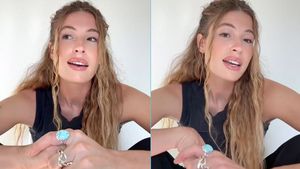There’s good news, albeit qualified, for our representation on television: Prime-time broadcast TV for the 2012-2013 season offers a record high percentage of LGBT characters, according to GLAAD, although it still doesn’t reflect the diversity of the U.S. population.
GLAAD’s “Where We Are on TV” report, released today, notes that 4.4% of characters to be featured regularly on the five broadcast networks this season are LGBT, up from 2.9% in the 2011-2012 season. There’s also greater LGBT representation on scripted cable shows. GLAAD found Fox’s Glee to be the most inclusive show on broadcast TV, HBO’s True Blood the most inclusive on cable. ABC led broadcast networks in LGBT characters, while Showtime had the highest number on cable.
“This year’s increase of LGBT characters on television reflects a cultural change in the way gay and lesbian people are seen in our society,” said GLAAD president Herndon Graddick in the report. “More and more Americans have come to accept their LGBT family members, friends, coworkers, and peers, and as audiences tune into their favorite programs, they expect to see the same diversity of people they encounter in their daily lives.”
GLAAD also found that the ethnic diversity of characters on prime-time broadcast TV improved, but it still doesn’t accurately reflect U.S. demographics. Cable programs are actually less diverse than broadcast in terms of race and ethnicity, GLAAD reported. Women and people with disabilities remain underrepresented on television.
This is the 17th year GLAAD has tracked the number of LGBT characters on television, the eighth year it has looked at gender and race/ethnicity demographics (of all characters, not just LGBT), and the third year it has tracked characters with disabilities. This year, for the first time, the report includes perspectives of other media advocacy groups: the National Hispanic Media Coalition, the Asian-Pacific Media Coalition, SAG-AFTRA, and Missrepresentation.org.
The report is based on characters on scripted series that started after May 31 and anticipated casts for the upcoming 2012-2013 season. At the season’s end GLAAD will compile an in-depth analysis of the images presented on television in its seventh annual Network Responsibility Index, which rates broadcast and cable networks on the quantity and quality of their LGBT content.
Television can have a major impact on people’s lives, Graddick said. “It is vital for networks to weave complex and diverse storylines of LGBT people in the different programs they air,” he said. “When young LGBT people see loving couples like Callie and Arizona on Grey’s Anatomy orDegrassi‘s confident transgender high school student Adam Torres, they find characters they can look up to and slowly start building the courage to live authentically.”






























































































 Cindy Ord/Getty Images
Cindy Ord/Getty Images

























